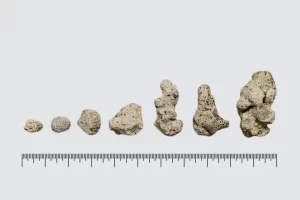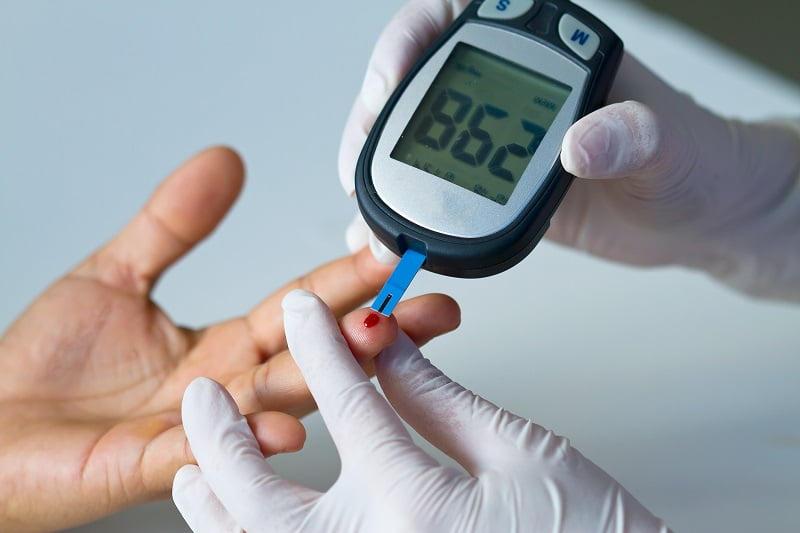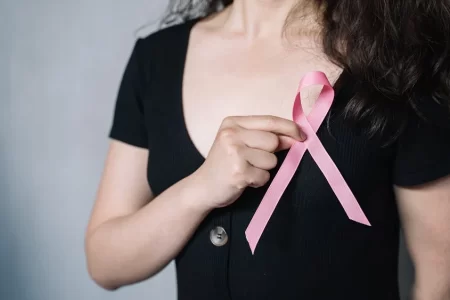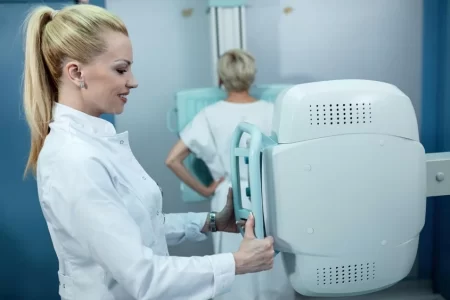Breast cancer survival rate
Survival rates give an estimate about the percentage of people (with the same type and stage of cancer) which are still alive at a certain time (usually 5 years) after they were diagnosed with breast cancer or any other type of cancer. Survival rate provides a better understanding of the likelihood of a successful treatment.
5-year survival rate for breast cancer
The 5-year survival rate gives an idea about the percentage of people who live at least 5 years after being diagnosed with breast cancer. For example, a 5-year survival rate of 90 percent signifies that approximately 90 people out of 100 are still alive 5 years after being diagnosed with breast cancer.
The 5-year relative survival rate
It is a more accurate way to estimate the effect of cancer on survival. Relative survival rates compare women with breast cancer to other women in the overall population. Relative survival rate is a net survival measure indicative of cancer survival in the absence of other causes of death. According to National Cancer Institute, it is defined as the ratio of the proportion of observed survivors in a cohort of cancer patients to the proportion of expected survivors in a comparable set of cancer free individuals. It can be used to estimate survival rate for any type of cancer including the breast cancer.
More: Overview of breast cancer in females
More: Treatment for breast cancer
Predictors for Breast Cancer Survival Rates
Every single breast cancer patient has her own, unique case. Prognosis and breast cancer survival rates provide an approximate guide only and are not indicative of actual survival for each individual person.
However, there are certain predictors for breast cancer survival rates that play a significant role in prognosis. These may include such as:-
- The stage of breast cancer at the time of diagnosis
- The grade of the breast cancer
- A patient’s age at diagnosis
- The hormone receptor status
- Oncogene Expression (genes that can cause the cancer called breast cancer genes)
- Cell type of the tumor
- Race and ethnicity
Read more about causes and risk factors for breast cancer
Breast cancer survival rates by stage
The outlook for women with breast cancer significantly varies based on the stage of breast cancer. In general, the survival rates for the earlier stages are much better than the later stages of cancer. The 5-year breast cancer stages survival rate is given below:
Stage 0 breast cancer survival rate
Stage 0 is the onset of cancer. If the cancer is diagnosed at stage 0, there are high chances to cure it completely. In stage 0, breast cancer survival rate is almost 100 percent.
Stage 1 breast cancer survival rate
Stage 1 of breast cancer is counted as an initial stage cancer. If a cancer is diagnosed at stage 1, there are high possibilities that the cancer can be cured.
Stage 2 breast cancer survival rate
Stage 2 of breast cancer is an intermediate stage. The chances of survival in this stage are lesser than the chances of survival in the initial stages. In stage 2 breast cancer, the 5-year survival rate is about 93 percent. Stage 2 breast cancer life expectancy after 10 years is relatively less.
Stage 3 breast cancer survival rate
The stage 3 breast cancers prognosis is about 72 percent. But, women with this type of breast cancer can often be treated successfully.
Stage 4 breast cancer survival rate
Stage 4 signifies that cancer has spread to other parts of the body such as bones, lungs, liver, or even brain. It is also known as metastatic cancer and such cancers are more difficult to treat and tend to have a poorer outlook. Metastatic breast cancer prognosis is about 22 percent. Still, many treatment options are available for this stage of breast cancer to help the patient feel comfortable and relieve the symptoms.
Breast cancer survival rates by age at the time of diagnosis
It has always been thought that young women (under 40 at the time of diagnosis) have a poorer prognosis than older women. A recent study revealed that both ends of the age spectrum rather have a poor prognosis. Women whose age is below 40 years and above 80 years at the time of diagnosis have a statistically poorer prognosis.
For older women (older than 80 years), the reasons for poorer prognosis can be attributed to such as less immunity at such age. For younger women, the reason is mainly because of the fact that they often present with higher grade tumors (which are more aggressive) and are less likely to be hormone receptor positive. The breast cancer in such cases may not respond well to treatment.
A brief summary of survival rate at different ages in women is given below:
- The survival rate of women with breast cancer at the age of 20 years is 80 percent.
- The survival rate of women with breast cancer at the age of 25 years is 75 percent.
- The survival rate of women with breast cancer at the age of 30 years is 72 percent.
- The survival rate of women with breast cancer at the age of 35 years is 76 percent.
- The survival rate of women with breast cancer at the age of 40 years is 80 percent.
- The survival rate of women with breast cancer at the age of 50 years is 86 percent.
- The survival rate of women with breast cancer at the age of 60 years is 84 percent.
- The survival rate of women with breast cancer at the age of 70 years is 86 percent.
- The survival rate of women with breast cancer at the age of 80 years is 86 percent.
More: Breast Cancer Genetic Testing
More: Breast Pain: Is it Cancer?
Breast cancer survival rates by tumor grade
Breast cancer grade refers to the size and shape of the cancerous cells in the breast. High grade cancers are those cancers which look significantly different and do not match with the normal cells at all. There are three main breast cancer grades as follows:
Grade 1 type breast cancer
The cancer cells can be easily differentiated. These cancer cells grow very slowly and thus look similar to normal cells.
Grade 2 type breast cancer
These cancer cells are moderately differentiated. The cells look less like normal cells and tend to grow faster.
Grade 3 type of breast cancer
They do not look like normal cells at all. These are poorly differentiated and such cancer cells grow very fast and are considered malignant.
Higher grade breast cancers tend to have a poorer prognosis.
Breast cancer survival rates by hormone receptor status
Each breast tumor is different and reacts differently. This is true in case of hormone receptor status also. When a breast cancer tumor tests ‘positive’ for the hormones estrogen and progesterone, it implies two things:
- The cancer can grow very quickly because it responds positively to the changes that happen in hormones (estrogen and progesterone).
- The tumor will likely be cured because it is highly responsive to chemotherapy and hormonal therapy treatments.
Breast cancer survival rate by oncogene expression (HER-2)
An oncogene is a tiny fragment of genetic material which is carried in a chromosome. Presence of HER-2 in the chromosome can cause normal cells to become malignant.
Approximately one-third of all breast tumors are known to produce the HER-2 oncogene. These patients tend to have higher rates of breast cancer recurrence and lower overall breast cancer survival rates.
The overall 5-year survival rate of HER-2 positive breast cancer is 88.6 percent.
Triple negative breast cancer
If the breast cancer cells are tested negative for estrogen receptors (ER-), progesterone receptors (PR-), and HER2, the cancer is a triple-negative breast cancer. This type of breast cancer tends to be more aggressive than other types of breast cancers. Triple negative breast cancer survival rate is 77 percent.
Breast cancer survival rate by breast cancer type and sub-type
Breast cancer ‘type’ (or sub-type) is determined by the cell shape and its appearance. In general, there are six types of breast cancers (carcinomas) including:
Infiltrating/invasive ductal carcinoma
Infiltrating ductal carcinoma of the generic type is the most common breast cancer type. It represents about 78 percent of all cases.
The term ‘infiltrating’ and ‘invasive’ are related to the cancer stage. A ductal carcinoma is termed infiltrating if it infiltrates the duct wall. But, if the cancer cells are found beyond the duct wall and start invading the surrounding tissue, then it is invasive ductal carcinoma
Since, an invasive ductal carcinoma suggests a more serious and aggressive situation, the survival rates are most likely slightly lower. The 5-year survival rate for invasive ductal carcinoma is found to be 94.9 percent.
Infiltrating/invasive lobular carcinoma
Infiltrating lobular carcinoma (ILC) appears as a minor thickening in the upper-outer breast quadrant. These tumors originate mostly in the breast lobules (mammary glands).
Invasive lobular cancer is a less common cancer than the invasive ductal cancer and accounts for about 10 percent of all invasive breast cancer cases. Survival rates for these types of cancers range from about 77 to 93 percent.
Mucinous or colloid breast carcinoma
Mucinous breast carcinoma is responsible for poorly defined cells and a lot of mucus production. This type of cancer is very rare and accounts for only 2 percent of breast cancers. The survival rate for mucinous breast carcinoma is about 90 percent because mucinous breast cancer rarely spreads to the lymph nodes.
Medullary breast carcinoma
Medullary carcinoma of the breast is another rare type of breast cancer and accounts for around 1 to 7 percent of all invasive breast cancers. The malignant cells resemble the ‘grey matter’ in the medulla of the brain and so-called medullary breast carcinoma.
The overall survival rate for medullary breast cancer is found to be around 91 percent.
Tubular breast carcinoma
The affected cells in this type of cancer have a distinct tubular formation when examined through the microscope and so-called tubular breast carcinoma. Generally, this cancer is very rare and accounts for only around 1 to 4 percent of all invasive cancers.
The prognosis for this type of cancer when it is of the ‘pure’ tubular type is high, which is about 100 percent.
Inflammatory breast carcinoma
Inflammatory breast cancer is another very rare type of cancer and accounts for only 1 to 5 percent of all invasive breast cancers.
This type of breast cancer is very aggressive and also progresses quickly. Inflammatory breast cancer has a poor prognosis. The survival rate for inflammatory breast cancer is about 65 percent.
Note: The above-discussed survival rates are only estimates. They can’t predict what will happen to any individual because each and every individual is different and react differently to the treatment of breast cancer. It is always better to talk to the doctor to better understand the specific situation in your case.
Is breast cancer curable?
Breast cancer is curable if diagnosed at early stages. Read about early stage diagnosis and detection of the breast cancer. The greater the stage of the breast cancer, the less likely it is to be cured.







